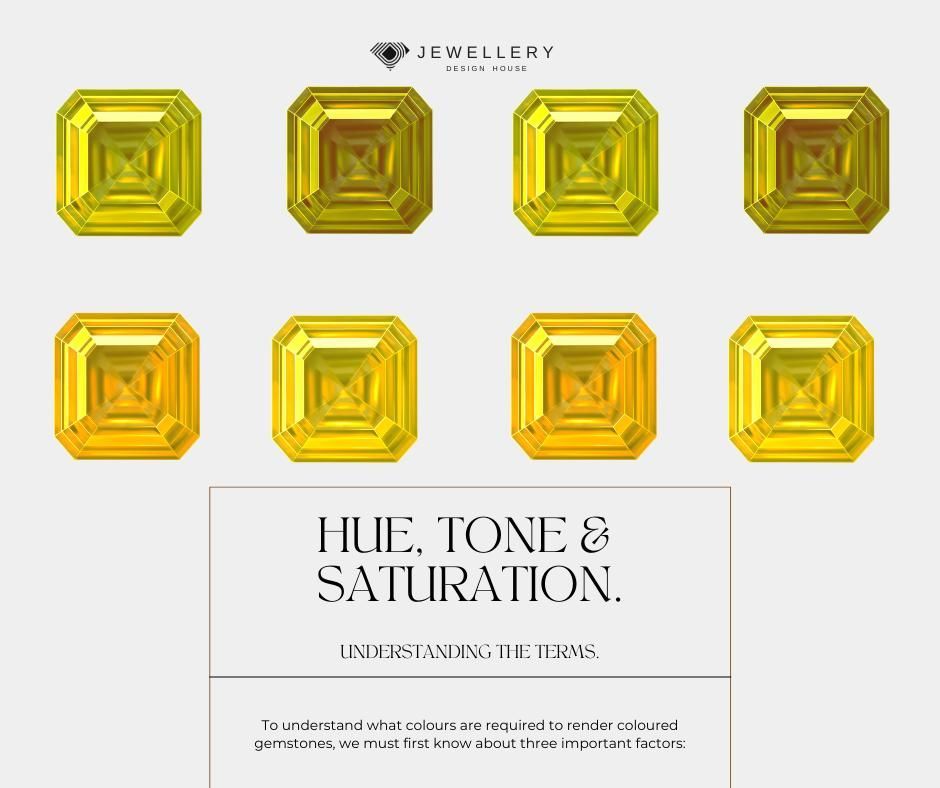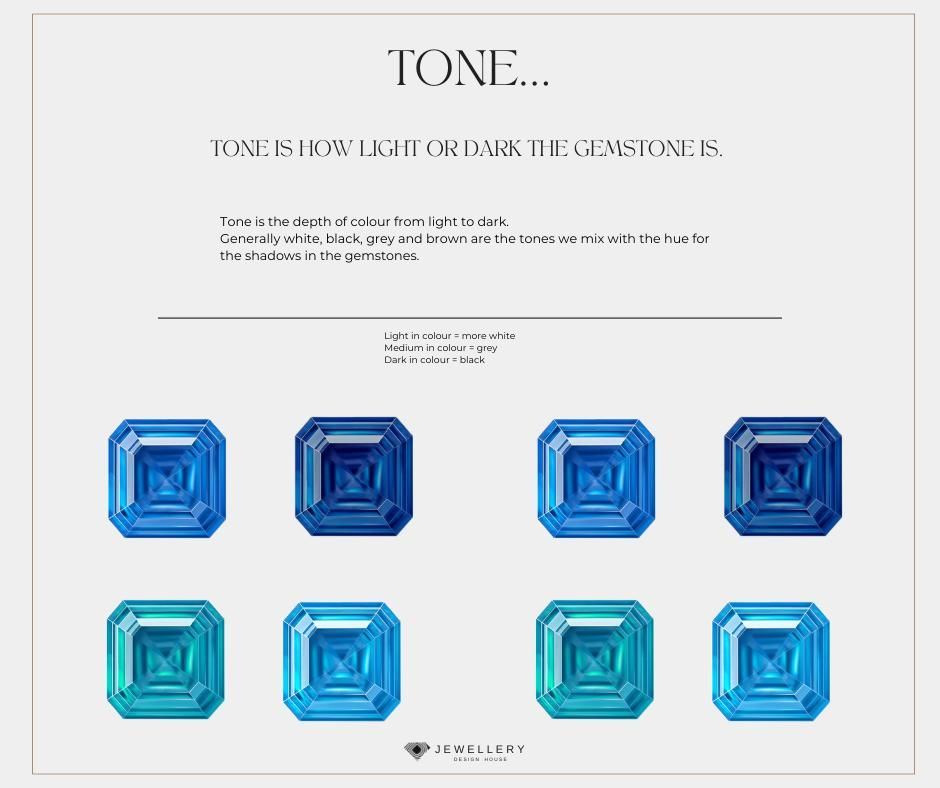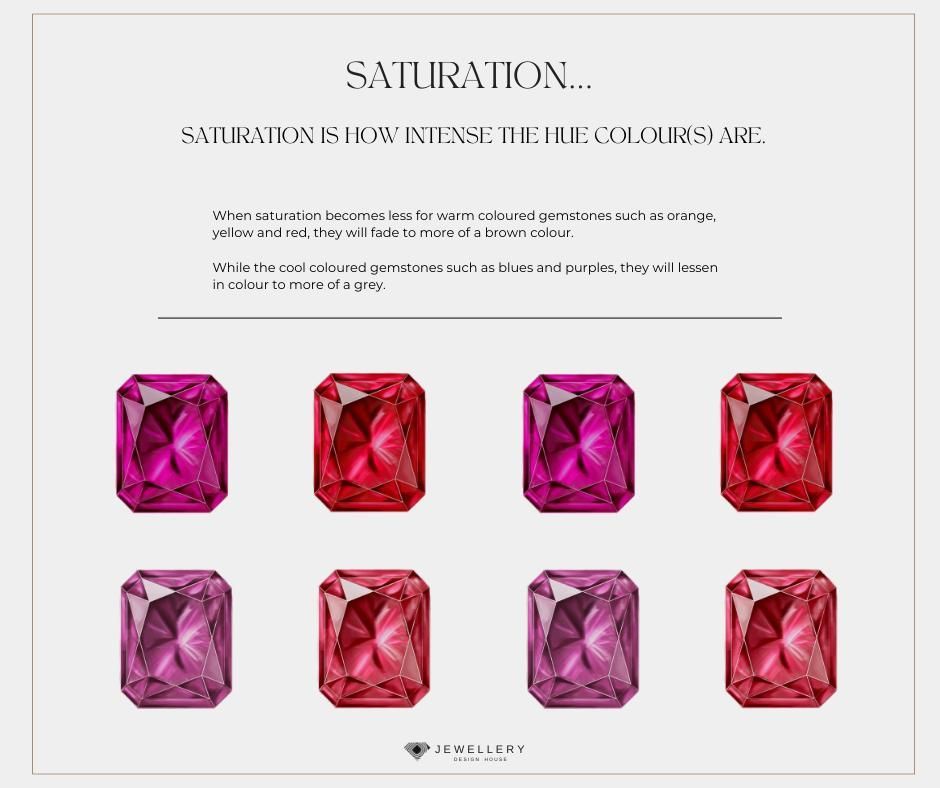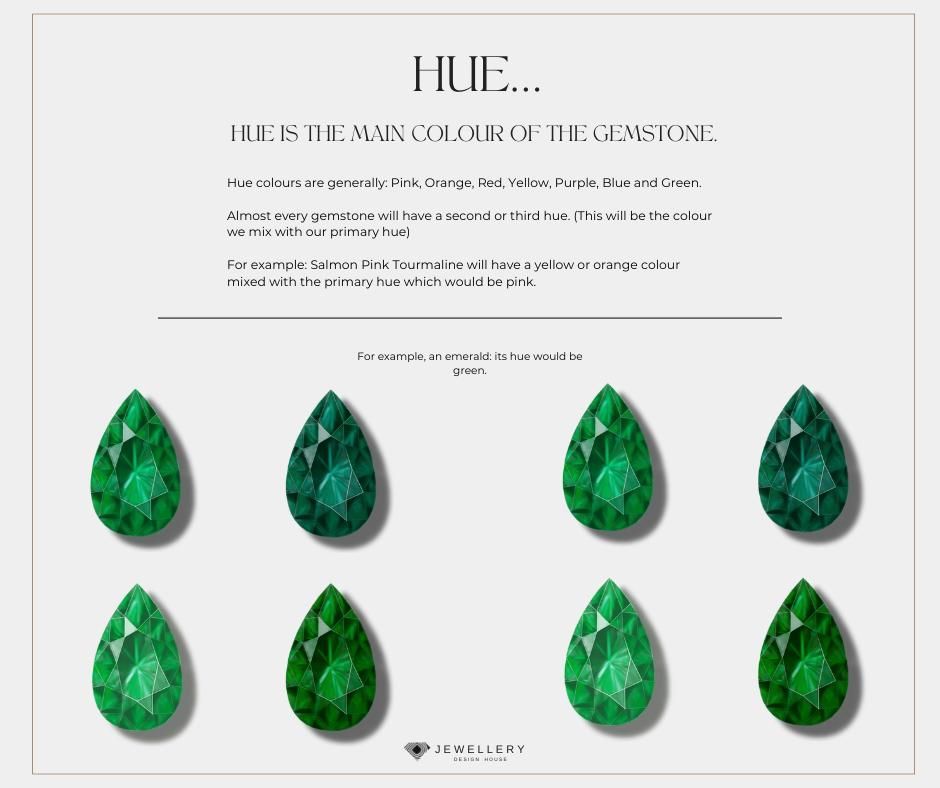
Do you know your rubies from your sapphires? What about your emeralds and amethysts? If not, don't worry – you're not alone! Many people don't know the difference between various types of gemstones, simply because they aren't familiar with the terms used to describe their colour. In this blog post, we will explore the concepts of hue, tone, and saturation as they relate to coloured gemstones. We'll also provide some tips on how to choose the right stone for you!
Drag to resize
Colour is one of the most important factors to consider when purchasing a coloured gemstone. The three terms we will be discussing in this blog post are hue, tone, and saturation. Hue refers to the actual colour of the stone, while tone describes how light or dark the colour is. Saturation determines how pure or intense the colour is.
Drag to resize

When choosing a coloured gemstone, it's important to consider your skin tone and what colours look good on you. For example, someone with cool undertones might want to choose stones that have a bluish hue, like sapphires or aquamarines. Conversely, someone with warm undertones might prefer stones that have a yellowish hue, such as rubies or topazes.
Drag to resize

As far as tone and saturation are concerned, it is generally recommended that people choose stones with a medium tone and moderate saturation. Very light or very dark stones can be difficult to match with clothing, while extremely saturated colours might be overwhelming. That being said, it is ultimately up to you to decide what you like best!
Drag to resize

Do you have any favourite-coloured gemstones? Let us know in the comments below! And if you're still not sure how to tell the difference between all of those different colours, don't worry – we'll be discussing that in our next blog post. Stay tuned!




